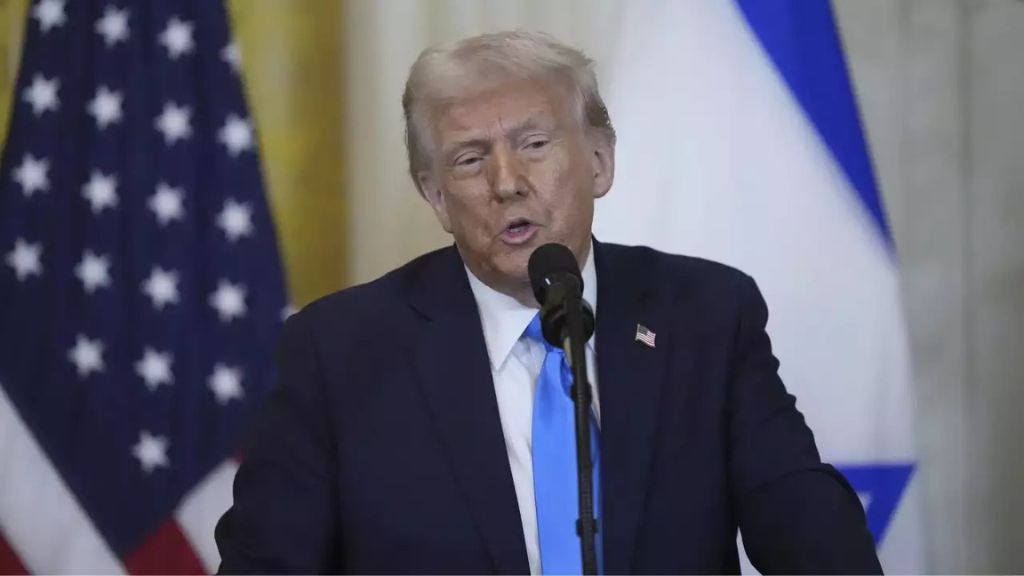Big news is shaking up Washington! On March 20, 2025, President Donald Trump announced plans to sign an executive order aimed at tearing down the U.S. Department of Education. It’s a bold, headline-grabbing step that’s sparking debates and raising eyebrows across the country.
But hold on—it’s not quite as simple as shutting the doors and calling it a day. While Trump’s team is tossing around words like “close,” the reality is a bit murkier, and Congress holds the keys to any real shutdown. So, what’s actually happening? Let’s break it all down in a friendly, easy-to-digest way and figure out what this means for schools, students, and families!
A Big Swing at Presidential Power
Trump’s latest move is nothing short of dramatic. Set to put pen to paper on Thursday afternoon, he’s kicking off what could be his most controversial push yet to flex presidential muscle. The U.S. Department of Education, born in 1979 under Congress’s watch, has been a cornerstone of federal support for schools. Now, Trump wants it gone—or at least shrunk down to a shadow of its former self.
But here’s the catch: he can’t just snap his fingers and make it disappear. Fully dissolving the department needs a green light from Congress, and that’s where things get tricky.
Read Also: Unlock the Fed’s Secrets: Master Their 2025 Projections Like a Wall Street Genius!
For now, the White House admits the agency will keep running in some form, handling “critical programs” even as it faces a major overhaul. Think of it like a massive downsizing rather than a total closure—at least until lawmakers weigh in.
What’s Trump Trying to Do?
So, what’s the plan? Trump’s executive order directs his Education Secretary, Linda McMahon, to take “all necessary steps” to wind down the Department of Education and hand education control back to the states. It’s a core piece of his vision to shrink federal oversight and let local governments call the shots. At the same time, the order promises that key services—like funding for schools and student loans—won’t just vanish overnight.
Here’s where it gets fuzzy: those big programs, like Title I (which helps high-poverty schools) and student loans, are tied to the department by laws Congress wrote. Moving or killing them outright would need new legislation—something Trump can’t do alone. For now, the White House is framing this as a mission to cut “wasteful spending” while keeping the essentials alive. What counts as “waste”? They’re not spilling the beans just yet.
Will the Education Department Really Close?
Don’t expect the department to lock its doors tomorrow. White House Press Secretary Karoline Leavitt made that clear on Thursday, saying the agency won’t be abolished outright. Instead, it’s getting a major slim-down. “Much smaller than it is today” is the official line, with McMahon tasked to “greatly minimize” its size. The goal? Spend less federal cash on education while protecting what they call “critical programs.”
Leavitt pointed to the department’s $3 trillion tab since 1979, arguing it hasn’t delivered bang for the buck. “Less than ideal, less than proficient” is how she described student outcomes—a jab at the agency’s track record. Critics might argue that’s a tough sell when the department’s research arm, which tracks those stats, is already on the chopping block. More on that later!
What Happens to School Funding and Student Loans?

Let’s talk about the stuff that hits close to home—school funding and college loans. Public schools lean on the Education Department for big chunks of cash, like Title I funds for low-income areas and money for students with disabilities under the IDEA program. Then there’s Pell Grants and student loans, which millions use to afford college. Good news: Leavitt says these aren’t going anywhere under Trump’s order. The department will keep dishing them out—for now.
But there’s a twist. A White House official told reporters McMahon’s cooking up a plan to “bring these funds closer to states, localities, and students.” What does that mean? Maybe shifting control to state governments or even other federal agencies like the Small Business Administration or Commerce Department for student loans. That’s still a long shot, though—Congress would need to rewrite the rulebook first.
DEI and LGBTQ+ Programs in the Crosshairs
Trump’s order isn’t just about size—it’s about priorities too. Any programs still getting Education Department funds will be banned from promoting diversity, equity, and inclusion (DEI) or “gender ideology,” per the White House. That’s a big deal for Trump’s base, who’ve long pushed to axe initiatives tied to racial diversity or gender identity beyond the binary male-female framework. It’s a policy he’s chasing across the whole government, not just education.
Expect pushback here. Advocates for these programs say they’re vital for equity in schools, and cutting them could spark legal battles—especially since the department’s still running (for now).
Workforce Already Slashed—More Cuts Coming?
This isn’t Trump’s first swing at the Education Department. Since his second term kicked off, the agency’s workforce has taken a hit. Over 1,300 employees got pink slips last week, part of a broader “reductions in force” wave driven by Elon Musk’s Department of Government Efficiency (DOGE). Add in other exits, and the staff count’s dropped from 4,133 to 2,183. That’s a huge cut—almost half gone!
Even with the layoffs, the department’s still chugging along, managing those key funding programs. But with fewer hands on deck, questions are swirling about how smoothly it can keep things running.
Why Does Trump Want It Gone?
Trump and many Republicans have a beef with the Education Department that goes back years. They argue it’s a federal overreach, meddling in state and local school decisions. Fun fact: the feds don’t actually control curriculums—that’s all local—but they do set rules for schools taking federal money. Trump’s take? States like Iowa and Indiana are doing great on their own, so why not let them run the show everywhere?

He’s also slammed U.S. schools’ global rankings, saying we spend the most per student but lag behind other countries. “We’re at the bottom of the list,” he griped last month. Ironically, the data he’s citing often comes from the department’s own research wing—now a shell of itself after staff cuts. Who’s going to track that progress if it’s gone?
States Taking Over: What Does That Look Like?
Trump’s big pitch is giving states full control over education. He’s name-dropped Iowa and Indiana as shining examples, and he’s even roped in GOP governors like Ron DeSantis (Florida), Glenn Youngkin (Virginia), Greg Abbott (Texas), and Mike DeWine (Ohio) to join him for the signing. It’s a flashy show of support, but the details? Still fuzzy.
Right now, states and local districts already decide curriculums. The federal role is more about funding and basic oversight—like making sure kids are safe and treated fairly. Handing it all to states could mean big changes in how money flows, but without a clear blueprint, it’s anyone’s guess how it’ll play out.
Can Congress Make This Happen?
Here’s the reality check: Trump can’t kill the Education Department solo. Congress created it, and only Congress can take it out. That means getting Democrats on board—good luck with that! Even some moderate Republicans might balk at moving the agency’s duties elsewhere in the government, an idea Trump’s floating with his team.
For now, this order’s more of a loud statement than a done deal. Legal challenges are already brewing, with teachers’ unions vowing to sue. It’s a fight that could drag on for months—or years.
Democrats and Advocates Push Back Hard
Democrats aren’t mincing words. Sen. Patty Murray (D-Washington) called Trump’s move a “wrecking ball” to the department, accusing him of smashing it apart even though he knows Congress holds the reins. “Fire the staff, break it to pieces, and you might get the same devastating result,” she warned.
Student loan advocates are just as fired up. Aaron Ament from the National Student Legal Defense Network said flat-out: “No executive order can legally erase the department.” He predicts chaos and hardship for students and families if this keeps rolling. McMahon herself has admitted Congress is the final boss here—so why the big show? Optics, maybe?
What’s Next?
Trump’s order is a bombshell, no doubt. It’s a signal of where he wants to take education—less federal, more state, and a lot leaner. But with Congress in the driver’s seat and lawsuits looming, the immediate impact’s up in the air. Schools won’t lose funding tomorrow, and student loans aren’t vanishing, but the department’s future? That’s a wild card.
What do you think? Is this a genius move to shake up education, or a recipe for disaster? Drop your thoughts below—we’re all ears!

